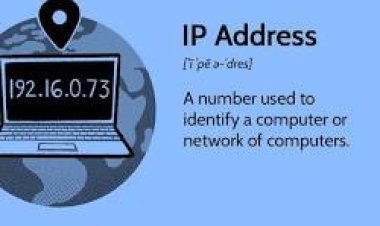Search Engine Optimization (SEO)
Search Engine Optimization (SEO) - Search Engine Optimization (SEO) is the process of improving the visibility and ranking of a website or web page in a search engine's unpaid results.

Search Engine Optimization (SEO) is the process of improving the visibility and ranking of a website or web page in a search engine's unpaid results.
This can be achieved by optimizing the website's content and structure, as well as building backlinks from other websites. The goal of SEO is to increase the quantity and quality of traffic to a website from search engines. This is done by researching keywords, creating high-quality content, and ensuring the website's technical elements are optimized.
SEO can be divided into two main categories: On-page SEO and Off-page SEO. On-page SEO refers to the optimization of elements that are within the website, while off-page SEO refers to the optimization of elements that are outside of the website.
Website Optimization
Website optimization is the process of improving the performance and user experience of a website. This can be achieved by optimizing various elements such as the website's content, structure, design, and code. Website optimization can be divided into several categories, including:
-
Speed optimization: This involves reducing the loading time of a website by optimizing images, minifying code, and using a content delivery network (CDN).
-
Content optimization: This involves creating high-quality, relevant, and useful content for the website's target audience.
-
Design optimization: This involves improving the website's layout, navigation, and overall aesthetic to enhance the user experience.
-
Code optimization: This involves optimizing the website's HTML, CSS, and JavaScript code to improve its performance and accessibility.
-
Search Engine Optimization: This involves making sure that the website is easily discoverable by search engines through techniques such as keyword research, meta tags, and backlinks.
Website optimization is the process of improving the performance and user experience of a website. This can be achieved by optimizing various elements such as the website's content, structure, design, and code. Website optimization can be divided into several categories, including:
-
Speed optimization: This involves reducing the loading time of a website by optimizing images, minifying code, and using a content delivery network (CDN).
-
Content optimization: This involves creating high-quality, relevant, and useful content for the website's target audience.
-
Design optimization: This involves improving the website's layout, navigation, and overall aesthetic to enhance the user experience.
-
Code optimization: This involves optimizing the website's HTML, CSS, and JavaScript code to improve its performance and accessibility.
-
Search Engine Optimization: This involves making sure that the website is easily discoverable by search engines through techniques such as keyword research, meta tags, and backlinks.
The goal of website optimization is to improve the website's overall performance, user experience, and search engine visibility, which can ultimately lead to increased traffic and conversions.
Digital Marketing
Digital marketing is the use of digital channels, such as search engines, social media, email, and websites, to promote a product or service.
Digital marketing is the use of digital channels, such as search engines, social media, email, and websites, to promote a product or service. It allows businesses to reach a large audience at a relatively low cost, and provides a more targeted and measurable approach to advertising.
Digital marketing can be divided into several categories, including:
-
Search Engine Optimization (SEO): The process of improving the visibility and ranking of a website or web page in a search engine's unpaid results.
-
Search Engine Marketing (SEM): The practice of advertising on search engines through paid methods, such as pay-per-click (PPC) advertising.
-
Social Media Marketing: The use of social media platforms to promote a product or service.
-
Content Marketing: The creation and distribution of valuable, relevant, and consistent content to attract and engage a specific target audience.
-
Email Marketing: The use of email to promote a product or service and build relationships with customers.
-
Influencer Marketing: The process of collaborating with individuals who have a strong online presence to promote a product or service.
-
Affiliate Marketing: The practice of partnering with other businesses to promote a product or service in return for a commission.
-
Video Marketing: The use of video to promote a product or service, it can be done through social media platforms, websites, and apps.
The goal of digital marketing is to increase brand awareness, generate leads and sales, and build relationships with customers through targeted and measurable campaigns.

















